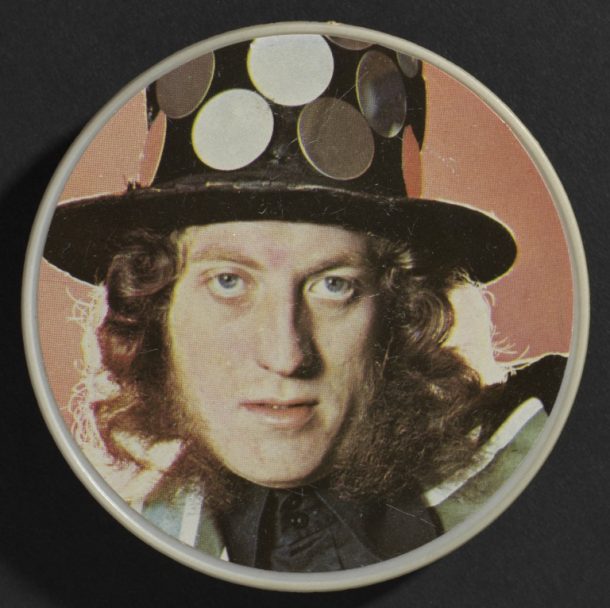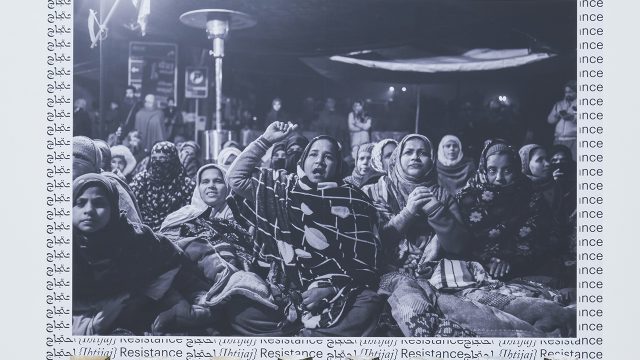Assistant Curators, Alice Young and Harriet Reed, explore the history of the Christmas Number One.
Waiting to hear who has reached the Christmas number one – the song that tops the UK Singles Chart on Christmas Day – has become an annual British tradition. Ever since the creation of the UK Singles Chart in 1952 and the BBC’s Top of the Pops in 1964, artists have competed to reach the top spot on 25th December. Even today, in the era of digital downloads and streaming, the Christmas edition of BBC’s Top of the Pops remains essential festive viewing.
So what makes a Christmas single so special? Is there a perfect formula to getting the Christmas number one?
A Nostalgic Message
Early popular Christmas songs were created and shaped by the entertainment industry, featuring in films, theatre shows, or on television. Festive-themed numbers in Hollywood musicals held huge appeal due to their nostalgia and wistfulness for Christmases past.
Irving Berlin’s ‘White Christmas’, originally recorded by Bing Crosby for the film Holiday Inn in 1942, has become the quintessential ode to Christmas sentimentality. Its wistful, nostalgic message struck a chord with listeners living through the Second World War, many of whom were spending Christmas away from home for the first time. The song quickly became Crosby’s signature tune, and remains the biggest-selling single of all time.

A Festive Theme
The first Christmas-themed chart-topper came with Dickie Valentine’s ‘Christmas Alphabet’ in 1955 – however it was 1973 that marked the first serious ‘battle’ for the Christmas number one, with two deliberately festive-themed singles: Slade’s ‘Merry Xmas Everybody’ and Wizzard’s ‘I Wish It Could Be Christmas Everyday’. The songs combined the fun and festivities of the Christmas season with the over-the-top outrageousness of garish glam rock to create the ultimate Christmas record.
Both bands were rival glam rock groups from the Midlands, and the UK quickly bought in to the excitement of seeing which competing record would come out on top. Slade eventually won out, with Wizzard peaking at number four – but both songs endure as staples of Christmas party playlists.

The Novelty Factor
In 1968, a comedy song called ‘Lily the Pink’ by The Scaffold reached the top of the Christmas charts. Novelty Christmas singles prove ever-popular in the UK and often cause controversy. In 1980, St Winifred’s School Choir from Stockport recorded ‘There’s No One Quite Like Grandma’. The record’s sentimental lyrics made it the perfect Christmas present, and it infamously kept ‘Imagine’ – which had been re-released following John Lennon’s murder – from the number one slot.
The Charity Single
In 1984, ‘Do They Know It’s Christmas?’ was the first festive single with a social conscience. The super-group Band Aid, formed by Bob Geldof and Midge Ure, featured some of the most successful musical acts of the 1980s. Written in response to the 1983-85 famine in Ethiopia, the song’s message about poverty and starvation tapped into our collective conscience. ‘Do They Know It’s Christmas?’ has sold almost four million copies in the UK and has raised over £8m. It was re-released in 1989, 2004 and 2014, topping the charts each time.

Online Rebellion
By the mid-2000s, the winners of the Christmas number one began to be dominated by the winners of the reality show X Factor. With four consecutive wins, it seemed that the TV giant had a monopoly on the Christmas number one – and the eager anticipation of awaiting the winner of the festive chart battle was all but gone.
By 2009 a rebellion was underway. Rage Against The Machine’s 1992 single ‘Killing In The Name’ – perhaps the most un-Christmassy song ever written – won the number one slot following a successful social media campaign. This online rebellion came as one of the biggest shocks in chart race history, and renewed excitement in the Christmas chart battle.
Who will be Christmas Number One this year?
Time will tell who will win the battle of 2017, with Alfie Boe and Michael Ball’s charity single (a cover of ‘Bring Me Sunshine’), an online campaign for Wham!’s ‘Last Christmas’ in memory of George Michael, and Elbow’s cover of The Beatles’ ‘Golden Slumbers’ currently featured in the John Lewis Christmas advert all competing against the annual X Factor winner and current artists already in the top 10. The battle isn’t over yet!
Learn more about the legacy of the Christmas Number One in the gallery display; Top of the Charts: The Battle for Christmas Number One, on display 28th November-4th February, Theatre and Performance, Gallery 103.


